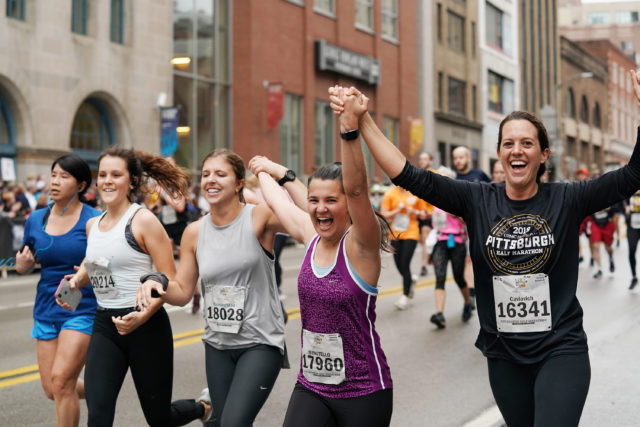Remember the Great Recession?
It lasted until 2013, when race finishers peaked at 19 million in the U.S. After that, Millennials led the charge to forge off into other athletic pursuits – Crossfit, hot yoga and circuit classes among them, and though event participation levels have been solid since, they’ve never crested the elusive 20 million mark.
But just wait.
Because the one necessity for a running boom in the United States, history shows us, is a certain amount of national stress. And in this case, that uncertainty is global – making it likely the Third Running Boom could be the biggest the world has ever seen. Those overseas are experiencing greater movement constraints than the U.S., but that hasn’t stopped them. One runner in France, unable to run in the streets, completed a marathon on his apartment balcony.
We’re only about a month into the COVID-19 pandemic in the United States, and already indicators that people will return to running as their simple, accessible, effective form of go-to exercise are abundant. There’s the widespread support – coming even from top levels of government – for big races like the Boston Marathon to be postponed, rather than canceled. With gyms, studios and other forms of structured group activity shuttered and in some cases banned, running is the easiest and most solitary replacement. Remember the “Loneliness of the Long Distance Runner?” That’s a very good thing, these days.
And the good news is that the sense of running as a solitary pursuit isn’t mandatory, not anymore. Social media has changed that forever. Apps like Strava are taking advantage of people’s newfound desire to simply MOVE during this anxious time, and the most effective replacement for dozens of events who have had to cancel for 2020 is the virtual run. The Running USA National Runner Survey will be out next week, with data that demonstrates that runners are growing increasingly comfortable with virtual events – a trend that we suspect will grow by leaps and bounds in the year to come.
The New York Times published an article recently that provides back-to-basics insight for the new or returning runner.
“It’s the perfect sport for a pandemic,” wrote Talya Minsburg in the Times. “All you need is a pair of shoes and a six-foot buffer from the next person.”
And as we all know with running, once you’re hooked on the endorphins and easy accessibility, looking for that next challenge on the horizon is the next step.
The Second Running Boom taught us that runners were comfortable running longer than they had ever ventured before. It fueled the popularity of the half marathon distance, which continues today. And once economic conditions improved, runners flocked to races in droves. Here’s the Running USA snapshot of the industry for 2010, reflecting data from the 2009 events, a reminder that “more and more Americans are finding that running is an inexpensive, convenient, social sport to help them stay healthy and tackle a new challenge or goal.”
In 2019, according to our latest Running USA trends report, 17.6 million people registered for a North American running race. That number has lowered in dribs and drabs since its peak in 2013, but it reflects a committed running population that has remained loyal to the sport. The challenge of the last few years, race organizers report, has been attracting that new runner. If there are many pluses in a pandemic, one could be that that new runner finds running all on their own. Bringing them to a race when things are over will be a challenge for the industry to take on together.
These are incredibly trying times for road races, who are focused on simply staying afloat in order to produce their next event when crowds are allowed to gather again. This week we’ve seen the running industry begin to mobilize in multiple ways to support and advocate for events large and small across the country. There will be more news to come on these efforts in the coming weeks, but Running USA is proud to do our part in supporting our members and the industry at large during this undeniably rough patch.
–Leah Etling, Running USA Marketing and Communications Director

